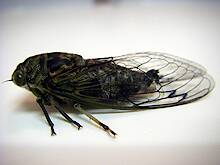
Blue-winged Olives
Baetis
Tiny Baetis mayflies are perhaps the most commonly encountered and imitated by anglers on all American trout streams due to their great abundance, widespread distribution, and trout-friendly emergence habits.
Featured on the forum
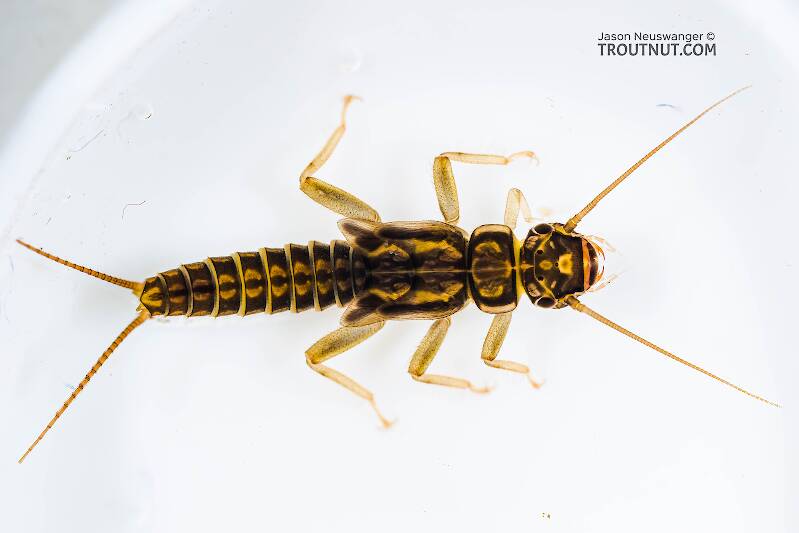

Troutnut is a project started in 2003 by salmonid ecologist Jason "Troutnut" Neuswanger to help anglers and
fly tyers unabashedly embrace the entomological side of the sport. Learn more about Troutnut or
support the project for an enhanced experience here.
DayTripper on Apr 13, 2013April 13th, 2013, 8:44 am EDT
I just finished reading, "What Trout Want: The Educated Trout and Other Myths," by Bob Wyatt. Its a great book, which I'd definitely recommend to others, but the reason I'm bringing it up is a part of it where the author challenges the science behind Lafontaine's sparkle pupa. In short, he talks about a Norwegian article that disputed Lafontaine's sparkle pupa theory, and inspired him to do some additional research. In short, he, nor the experts he corresponded with at American and British universities could find any scientific literature documenting the gas bubble effect the sparkle pupa was designed around.
He goes on to say that the "gas bubble phenomenon is undocumented in any scientific study because pharate caddisflies don't exude a gas that creates a bubble between their instar cuticles," and that, "the caddis emerger, at least those observed by science, does not ascend to the surface by the buoyancy produced by this bubble; it swims or crawls its way up."
Based upon my own observations from the one caddis pupa I was able to watch emerge in my home aquarium a few years ago, I didn't see the air bubbles I was expecting to see clinging to the pupa's abdominal area. It rapidly swam to to the surface, climbed onto a floating stick, and went from pupa to adult-- pics below.
I've read caddisflies, and have always just taken Lafontaine's word for it. But now I'm wondering if the sparkle pupa is just an attractor pattern, not a realistic representation of what an emerging pupa looks like. Any thoughts?
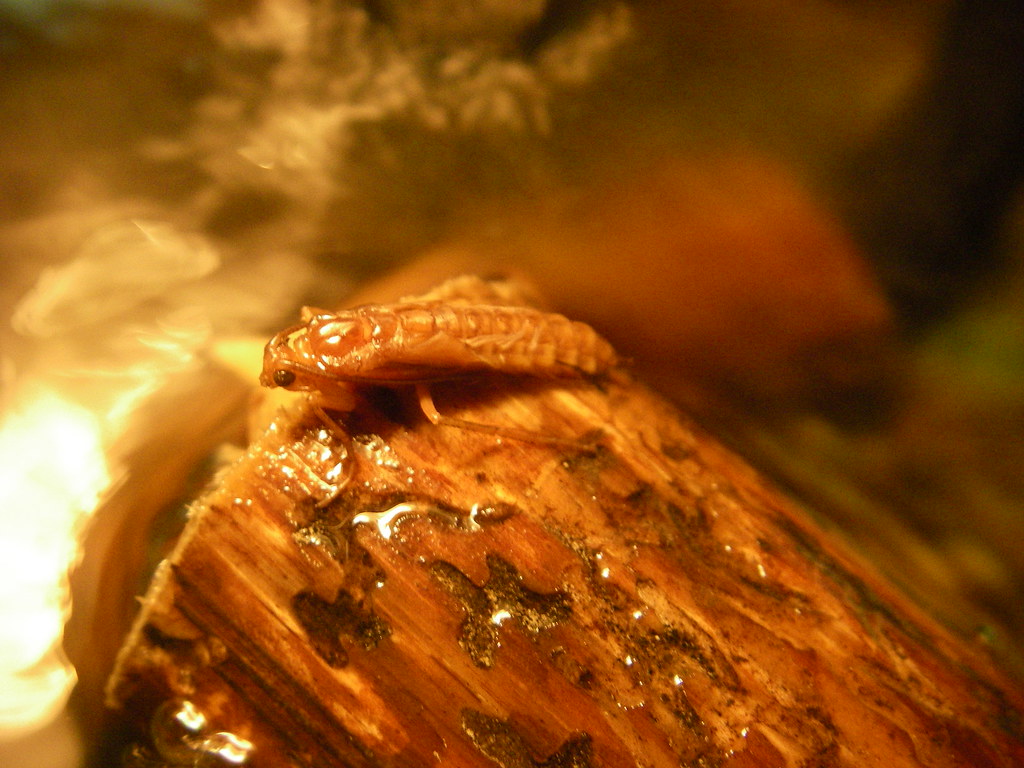
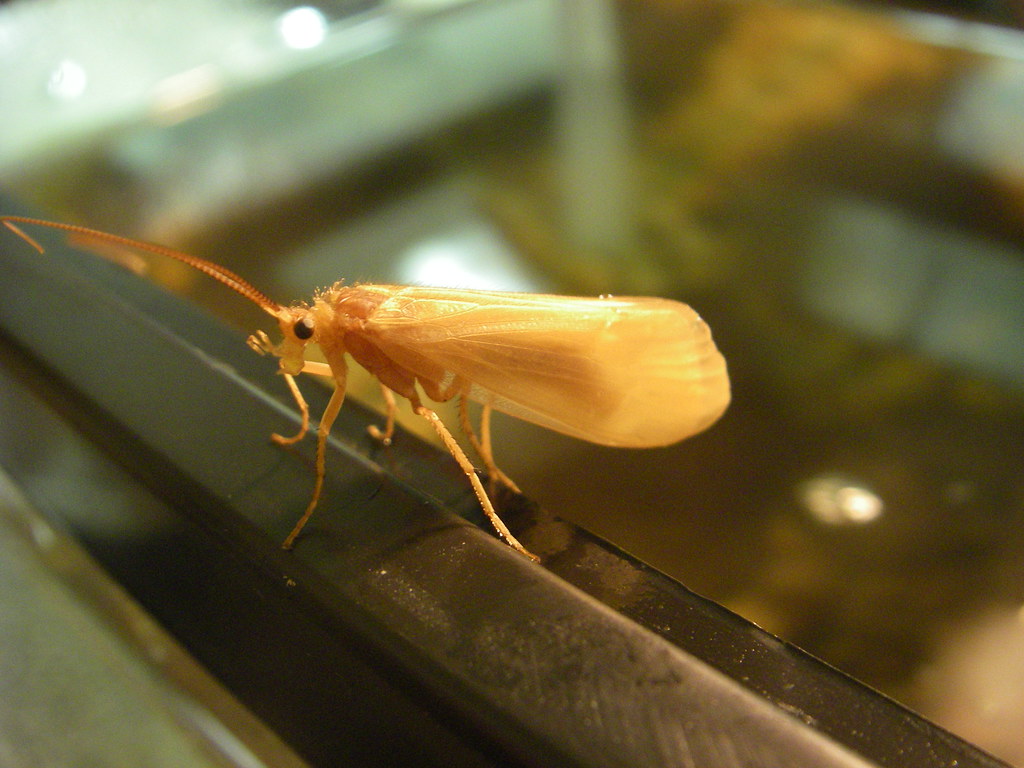

He goes on to say that the "gas bubble phenomenon is undocumented in any scientific study because pharate caddisflies don't exude a gas that creates a bubble between their instar cuticles," and that, "the caddis emerger, at least those observed by science, does not ascend to the surface by the buoyancy produced by this bubble; it swims or crawls its way up."
Based upon my own observations from the one caddis pupa I was able to watch emerge in my home aquarium a few years ago, I didn't see the air bubbles I was expecting to see clinging to the pupa's abdominal area. It rapidly swam to to the surface, climbed onto a floating stick, and went from pupa to adult-- pics below.
I've read caddisflies, and have always just taken Lafontaine's word for it. But now I'm wondering if the sparkle pupa is just an attractor pattern, not a realistic representation of what an emerging pupa looks like. Any thoughts?



Jmd123 on Apr 13, 2013April 13th, 2013, 9:23 am EDT
Kids and an aquarium - you just gotta love it! Children are natural scientists...
Jonathon
Jonathon
No matter how big the one you just caught is, there's always a bigger one out there somewhere...
Sayfu
Posts: 560
Posts: 560
Sayfu on Apr 13, 2013April 13th, 2013, 9:49 am EDT
I'm no scientist for sure, but I do know Gary has been challenged on a number of fronts as to the validity of his observations. I have been reading again for the umpteenth time, Craig Mathews and John Juracek's book, "Yellowstone Hatches", and on several occasions they dispute Gary's observations that Gary stated as fact. And my take on caddis pupa from what I have read is they do not swim to the surface (bacswimmers) quickly. They tend to emerge quickly once out of the case, but they swim up slowly.
DayTripper on Apr 13, 2013April 13th, 2013, 2:15 pm EDT
Did some googling and came across this thread here. Very cool info.
http://www.troutnut.com/topic/2516/Caddis-Pupae-Question
http://www.troutnut.com/topic/2516/Caddis-Pupae-Question
Entoman on Apr 13, 2013April 13th, 2013, 6:14 pm EDT
Good mining, Alex. There was another one that got more directly into the science on the topic of gas or fluid, but I can't find it. Probably because it was a partial hijack that you wouldn't necessarily recognize from the title. Hopefully somebody else can remember and locate it. There were some excellent super closeups of the pharates.
Anyway, while not incontrovertible at this point in time, the science (and most anecdotal observation) seems pretty solid that the cuticle space is occupied mostly by molting fluid and little gas, if any. However the space between the cuticle and adult body underneath is cause for a soft transluscent glistening look in the right light and can even be reflective as an artifact in some photos. Adult caddis swimming back to the surface after egg-laying can be described as sparkle caddis in the right light. They don't look all that different under water and swim with a similar motion. I suspect they are responsible for most of these anecdotal stories as the activity often happens together with emergences.
As to the pattern itself, I never had much luck with it in its commercial form. Too monochromatic, dense, and round. Hot pink or orange with a red glass bead underneath is a great egg imitation though. I've found the following modifications turn the so-so fly into a killer:
1. Instead of a bubble tie in a shell back.
2. Make it sparser, lighter, and a little tighter.
3. Forget the touch dubbing; dub normally with a heather mix of dubbing to match the natural, which is always darker than the shell to show underneath well.
3. An Aunt Lydia shell works fine for the small stuff, but for 14 and larger Z-lon works better.
Guides on the Lower Sac found this out as well. Back in the day, they would search out the sparsest, tightest dubbed bodies and shells in the bin. Before tying on they would trim out the underneath part of the shell. The fly became so wildly successful that The Fly Shop began stocking them that way. It was undoubtedly the most successful Mothers Day Pupa throughout the 90's in my part of the country and is still in the top list after all these years. It is no flash in the pan. I'll dig one out and post it. For the PA contingent, this pattern ought to be right up your alley!:)
Anyway, while not incontrovertible at this point in time, the science (and most anecdotal observation) seems pretty solid that the cuticle space is occupied mostly by molting fluid and little gas, if any. However the space between the cuticle and adult body underneath is cause for a soft transluscent glistening look in the right light and can even be reflective as an artifact in some photos. Adult caddis swimming back to the surface after egg-laying can be described as sparkle caddis in the right light. They don't look all that different under water and swim with a similar motion. I suspect they are responsible for most of these anecdotal stories as the activity often happens together with emergences.
As to the pattern itself, I never had much luck with it in its commercial form. Too monochromatic, dense, and round. Hot pink or orange with a red glass bead underneath is a great egg imitation though. I've found the following modifications turn the so-so fly into a killer:
1. Instead of a bubble tie in a shell back.
2. Make it sparser, lighter, and a little tighter.
3. Forget the touch dubbing; dub normally with a heather mix of dubbing to match the natural, which is always darker than the shell to show underneath well.
3. An Aunt Lydia shell works fine for the small stuff, but for 14 and larger Z-lon works better.
Guides on the Lower Sac found this out as well. Back in the day, they would search out the sparsest, tightest dubbed bodies and shells in the bin. Before tying on they would trim out the underneath part of the shell. The fly became so wildly successful that The Fly Shop began stocking them that way. It was undoubtedly the most successful Mothers Day Pupa throughout the 90's in my part of the country and is still in the top list after all these years. It is no flash in the pan. I'll dig one out and post it. For the PA contingent, this pattern ought to be right up your alley!:)
"It's not that I find fishing so important, it's just that I find all other endeavors of Man equally unimportant... And not nearly as much fun!" Robert Traver, Anatomy of a Fisherman
Entoman on Apr 13, 2013April 13th, 2013, 7:17 pm EDT
Unfortunately the body is in shadow and appears darker than it really is, but you get the idea. Drag it to your desktop and enlarge it to see the heather mix of dubbing. This should obviously be modified to match local critters. In March and April this fly always seems to be in the selection mix for me when fishing Grannom waters. Some spring creeks in the Fall too, though that one has a brighter body.
BTW - an added benefit is that the modified form is a much easier fly to tie and much faster as well.
Deep Sparkle Pupa (Grannom) #14
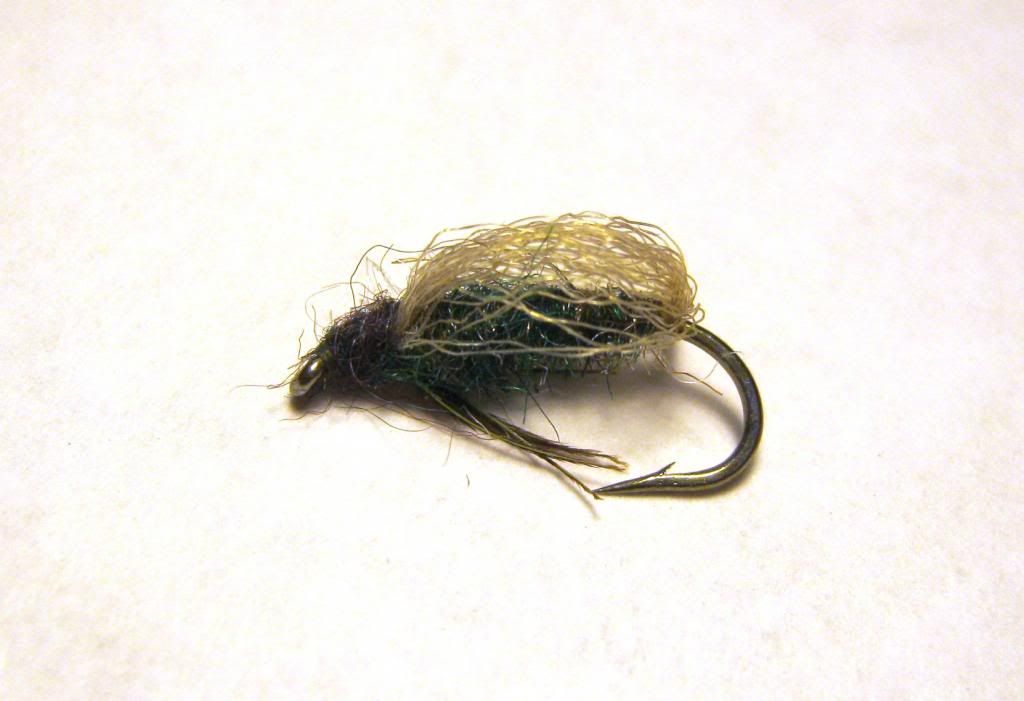
A popular commercial dressing for the same hatch.
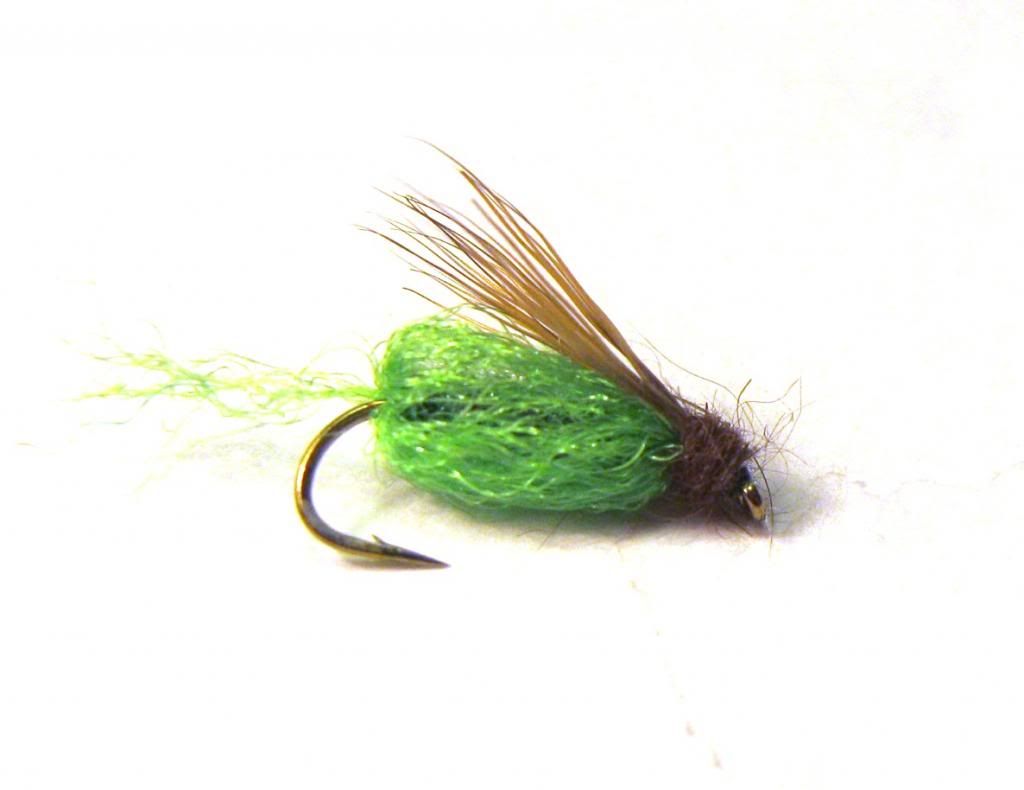
BTW - an added benefit is that the modified form is a much easier fly to tie and much faster as well.
Deep Sparkle Pupa (Grannom) #14

A popular commercial dressing for the same hatch.

"It's not that I find fishing so important, it's just that I find all other endeavors of Man equally unimportant... And not nearly as much fun!" Robert Traver, Anatomy of a Fisherman
DayTripper on Apr 14, 2013April 14th, 2013, 9:05 am EDT
Thanks! I've always hated trying to balance out those fibers around the abdomen. I've also got a sparkle pupa variation that I've doe well with, I'll post a pic shortly-- doing taxes right now, ughh...
Sayfu
Posts: 560
Posts: 560
Sayfu on Apr 14, 2013April 14th, 2013, 9:37 am EDT
There can be something to the notion that the bug may not trap air inside their case but you can. Sparsely tied fibers with some space between them can trap air, and create a diamond, glistening effect. I've done that with Muddler steelhead patterns given the recommendation at a tying seminar by a NW steelhead guru,, Mike Kinney. He said to flare the deer hear head, and don't pack it tight, and air will be trapped between the hair. I did just that, and took the pattern to the river, and could see the diamond sparkles under water. They could then possibly become a "trigger" for your pattern. I've always looked for a reason why European patterns seems so "scruffy" looking with not the profile that US patterns have in general, fibers poking out all over. Maybe this is the reason.
Oldredbarn on Apr 14, 2013April 14th, 2013, 12:15 pm EDT
This is an interesting discussion, but for whatever reason the thing catches fish...On this trip to PA Tony was doing well with one while at the same time I was fishing the same sized fly but an X-Caddis version and they were shutting me down.
I have had good luck with the emergent version of LaFontaine's pattern.
I like Kurts version though a great deal more than the over done ones...Over done with the antron bubble I mean...Attractor/Match the Hatcher is going to be difficult to determine I'm afraid.
Gary had some different ideas, some based on how he felt light was perceived by the trout...The ability that the trout may have to view a broader range of the light wave, or at least different portions of it than us humans may somehow account for some of the attractiveness of some of his flies to the fish...Maybe its just something different or grabs their attention.
We all seem to feel that a bug that is having issues getting aloft may seem more vunerable to the trout and therefore more likely to illicit a rise, so maybe this pattern appears like a struggling bug to the fish.
Spence
I have had good luck with the emergent version of LaFontaine's pattern.
I like Kurts version though a great deal more than the over done ones...Over done with the antron bubble I mean...Attractor/Match the Hatcher is going to be difficult to determine I'm afraid.
Gary had some different ideas, some based on how he felt light was perceived by the trout...The ability that the trout may have to view a broader range of the light wave, or at least different portions of it than us humans may somehow account for some of the attractiveness of some of his flies to the fish...Maybe its just something different or grabs their attention.
We all seem to feel that a bug that is having issues getting aloft may seem more vunerable to the trout and therefore more likely to illicit a rise, so maybe this pattern appears like a struggling bug to the fish.
Spence
"Even when my best efforts fail it's a satisfying challenge, and that, after all, is the essence of fly fishing." -Chauncy Lively
"Envy not the man who lives beside the river, but the man the river flows through." Joseph T Heywood
"Envy not the man who lives beside the river, but the man the river flows through." Joseph T Heywood
Gutcutter on Apr 15, 2013April 15th, 2013, 7:12 am EDT
On this trip to PA Tony was doing well with one while at the same time I was fishing the same sized fly but an X-Caddis version and they were shutting me down.
Spence
The pattern that I was using effectively for both the Grannom and Little Tan Caddis (Hydropsyche?) that week was almost identicle to the 1/2 sparkle pupa that Kurt has depicted. I fished a deeper pupa behind it, but went to only one fly when every fish wacked the sparkle pupa
All men who fish may in turn be divided into two parts: those who fish for trout and those who don't. Trout fishermen are a race apart: they are a dedicated crew- indolent, improvident, and quietly mad.
-Robert Traver, Trout Madness
-Robert Traver, Trout Madness
PaulRoberts on Apr 15, 2013April 15th, 2013, 7:32 am EDT
DayTripper, Glad you found that thread so I didn't have to. I have little more to say on the subject.
Nice fly and discussion Kurt. And Tony's already been there done that, putting them to good use.
Nice fly and discussion Kurt. And Tony's already been there done that, putting them to good use.
Entoman on Apr 15, 2013April 15th, 2013, 10:02 am EDT
Thanks, Paul. BTW - do you remember a similar thread we were participating in awhile back where somebody posted a great closeup of a pharate showing the molting fluid in the cuticle space? Heck, It may have been you that posted it.
PS - not the one already linked.
Eric, Louis, Tony - I only fish the SP deep and also only for grannoms. The version above and one a little brighter green in the body are the only ones I use. I've had better luck with other patterns near the top; either my Halo Pupa or a variation of Cutter's E/C. Have you guys had much luck with the latter back there? Out here on softer waters holding picky fish it seems to greatly out fish adult imitations most of the time, especially on those rare days when the activity is an emergence without much ovipositing going on..
Other deep patterns: For hydropsychids I like the Poopah (light cinnamon with a copper bead). For general use, I've made some great catches over the years with the Pettis Glass Bead Pupa. The latter is particularly effective as a searching pattern midday in the early Summer when the caddis start to get active down deep. Have you guys fooled around with these patterns much?
PS - not the one already linked.
Eric, Louis, Tony - I only fish the SP deep and also only for grannoms. The version above and one a little brighter green in the body are the only ones I use. I've had better luck with other patterns near the top; either my Halo Pupa or a variation of Cutter's E/C. Have you guys had much luck with the latter back there? Out here on softer waters holding picky fish it seems to greatly out fish adult imitations most of the time, especially on those rare days when the activity is an emergence without much ovipositing going on..
Other deep patterns: For hydropsychids I like the Poopah (light cinnamon with a copper bead). For general use, I've made some great catches over the years with the Pettis Glass Bead Pupa. The latter is particularly effective as a searching pattern midday in the early Summer when the caddis start to get active down deep. Have you guys fooled around with these patterns much?
"It's not that I find fishing so important, it's just that I find all other endeavors of Man equally unimportant... And not nearly as much fun!" Robert Traver, Anatomy of a Fisherman
PaulRoberts on Apr 15, 2013April 15th, 2013, 11:40 am EDT
I do. But...I don't remember who, when, or what it was called. I can picture the images actually. Eric? If it was me who posted them I'll be embarrassed and start worrying about my memory.
Entoman on Apr 15, 2013April 15th, 2013, 11:50 am EDT
Yeah, I'm pretty sure the thread title is totally unrelated. Perhaps it was Eric, as the photos were great. Maybe a hydropsychid determination? That would reduce the search down to only a few hundred threads or so.:)LOL I remember Gonzo and Creno were participating as well. That's the problem when we steer off topic with great stuff - it gets lost in cyberspace.:(
"It's not that I find fishing so important, it's just that I find all other endeavors of Man equally unimportant... And not nearly as much fun!" Robert Traver, Anatomy of a Fisherman
PaulRoberts on Apr 15, 2013April 15th, 2013, 12:42 pm EDT
I searched: hydropsychid fluid site:.troutnut.com
and got:
http://www.troutnut.com/topic/6818/Pupal-exuvia-pics
It was Dave who posted them.
and got:
http://www.troutnut.com/topic/6818/Pupal-exuvia-pics
It was Dave who posted them.
DayTripper on Apr 15, 2013April 15th, 2013, 4:42 pm EDT
Those pics are awesome on so many levels! Thanks, Paul!
This is an emerging caddis pattern I've been playing with. Still have a few things I want to tweak.
Reverse Parafoam Cream Emergig Caddis
Hook: Standard Dry Fly Hook
Thread: Yellow
Abdomen: Cream Superfine Dubbing
Abdomen "Shroud": Cream Dazzleaire Yarn
Thorax: Amber mixed with Cream Superfine
Hackle: Cream, tied in Parafoam style on Yellow 2mm Foam

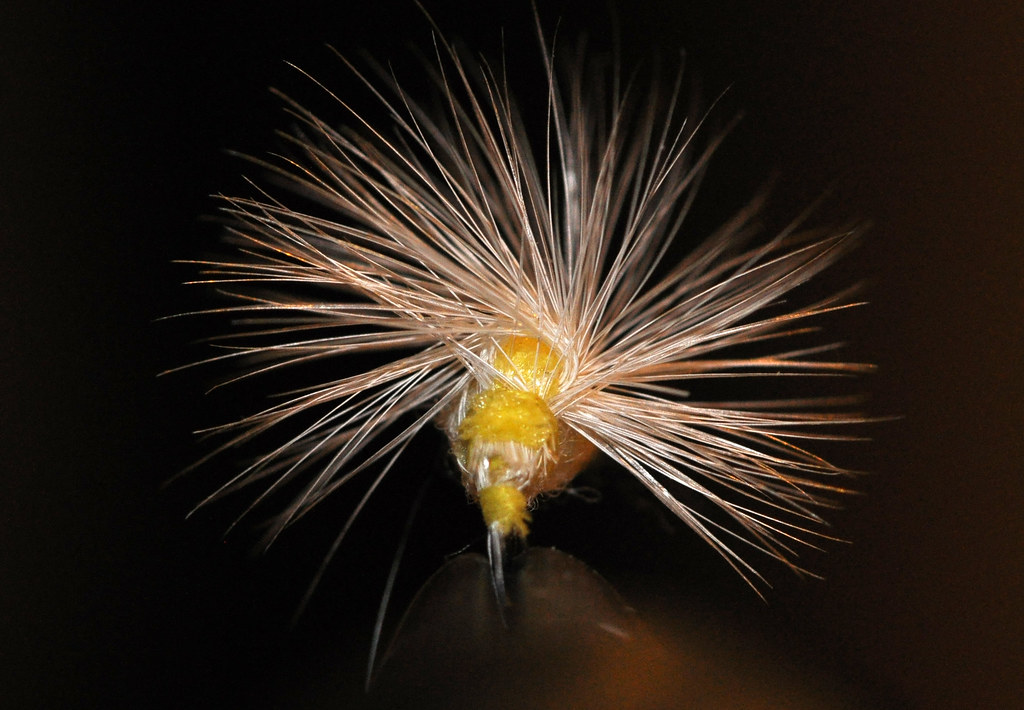
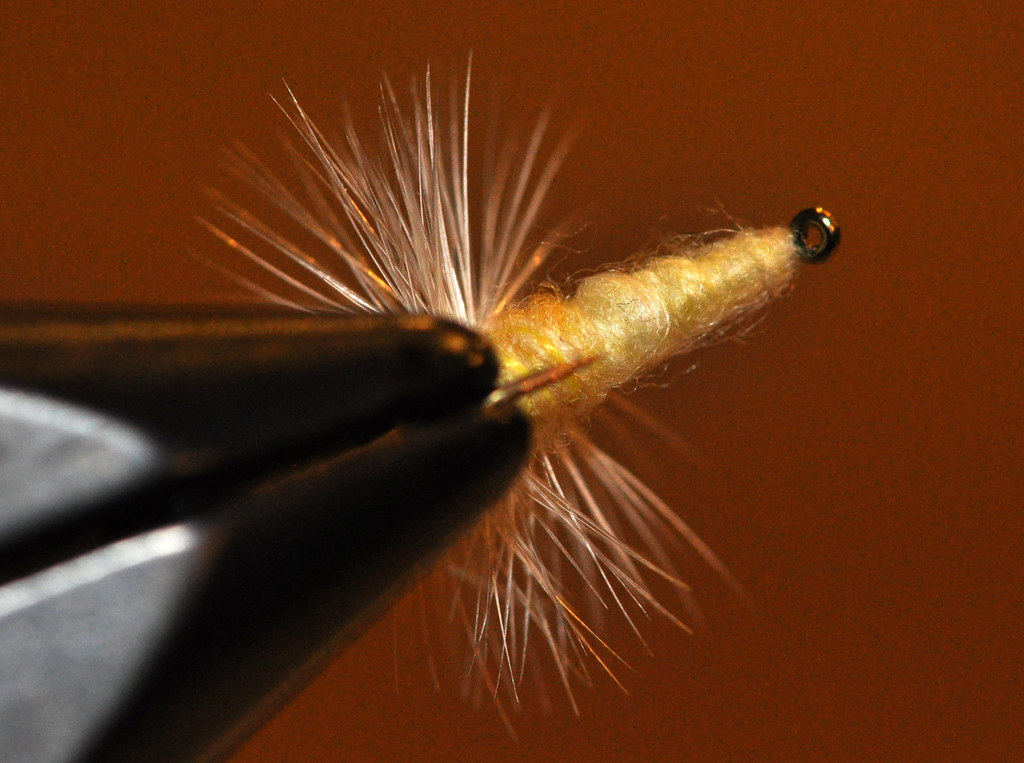
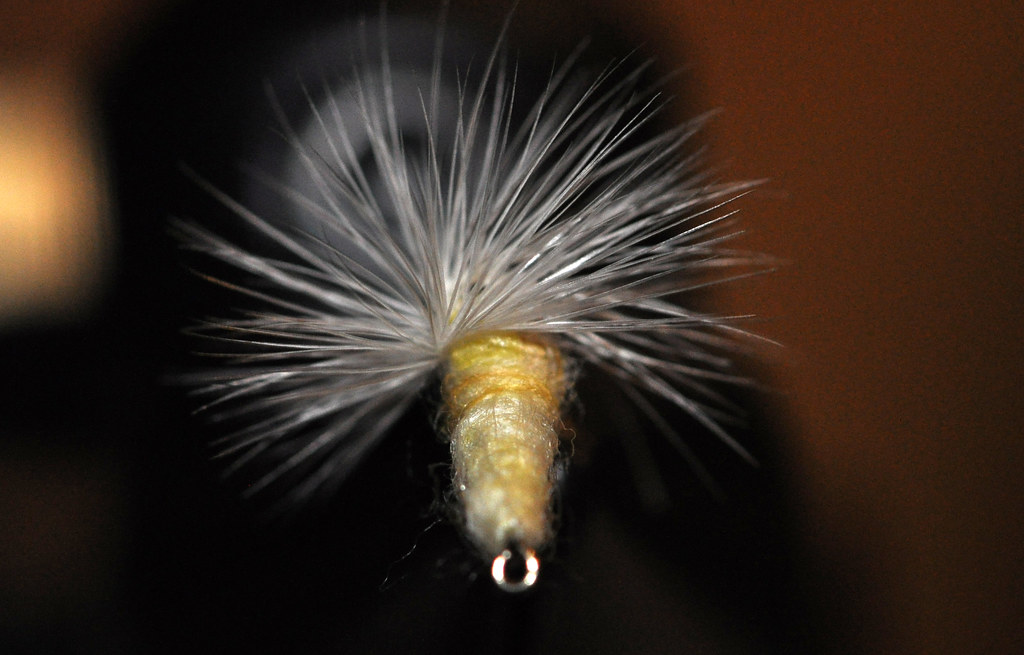
This is an emerging caddis pattern I've been playing with. Still have a few things I want to tweak.
Reverse Parafoam Cream Emergig Caddis
Hook: Standard Dry Fly Hook
Thread: Yellow
Abdomen: Cream Superfine Dubbing
Abdomen "Shroud": Cream Dazzleaire Yarn
Thorax: Amber mixed with Cream Superfine
Hackle: Cream, tied in Parafoam style on Yellow 2mm Foam




Entoman on Apr 15, 2013April 15th, 2013, 4:49 pm EDT
Them's the ones, Paul!! Great Job. Dave spun away from the original thread with this post, though. I remember a lot more fascinating discussion with good points made from both sides of the question.
Very nice fly, Alex.
Very nice fly, Alex.
"It's not that I find fishing so important, it's just that I find all other endeavors of Man equally unimportant... And not nearly as much fun!" Robert Traver, Anatomy of a Fisherman
PaulRoberts on Apr 15, 2013April 15th, 2013, 5:03 pm EDT
Yes, nice fly. I love it when people take it on themselves to figure stuff out for themselves. Fishing is a creative endeavor and FF esp so. Let us know how it pans out.
Martinlf on Nov 19, 2015November 19th, 2015, 12:21 pm EST
And one more on the bubble.
"He spread them a yard and a half. 'And every one that got away is this big.'"
--Fred Chappell
--Fred Chappell
Wbranch on Nov 19, 2015November 19th, 2015, 12:31 pm EST
But now I'm wondering if the sparkle pupa is just an attractor pattern, not a realistic representation of what an emerging pupa looks like.
Since Lafontaine can't defend his theory and since I catch plenty of trout on the Emergent Sparkle Pupa I don't care if it is an attractor or not.
Catskill fly fisher for fifty-five years.
Quick Reply
Related Discussions
Topic
Replies
Last Reply
1
Jan 10, 2012
by Doublespey
by Doublespey
40
Nov 23, 2015
by Martinlf
by Martinlf


